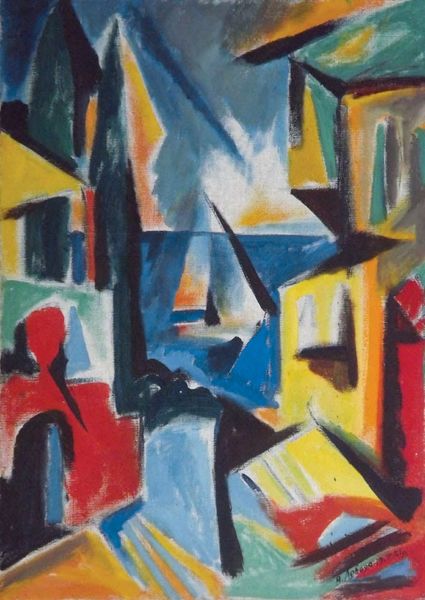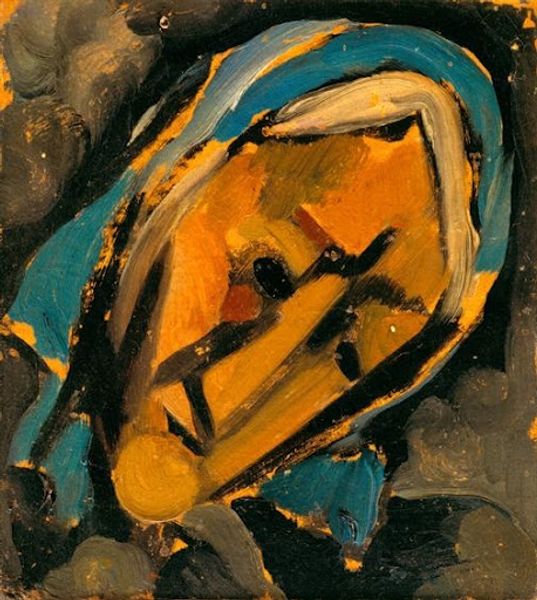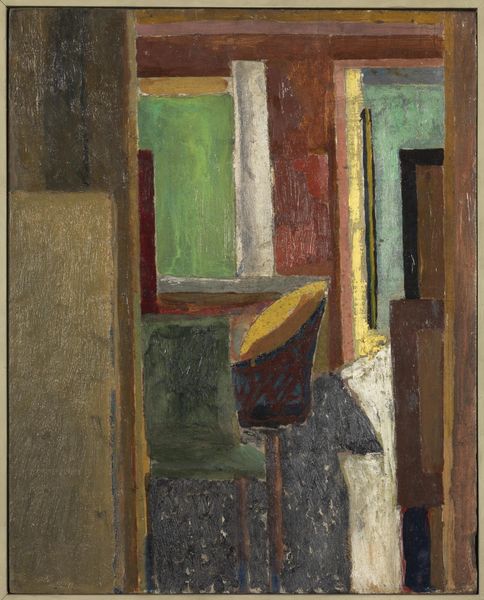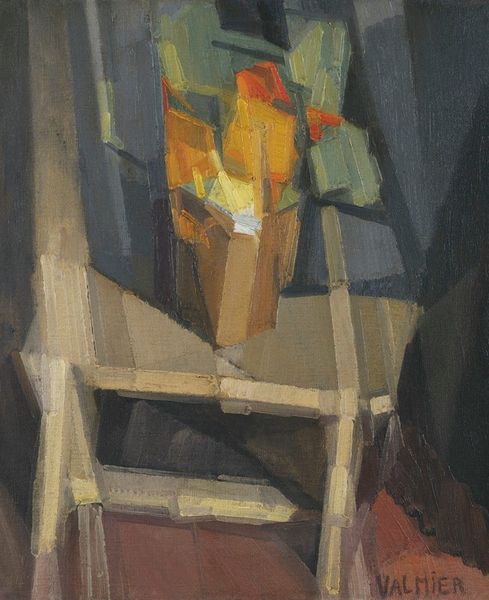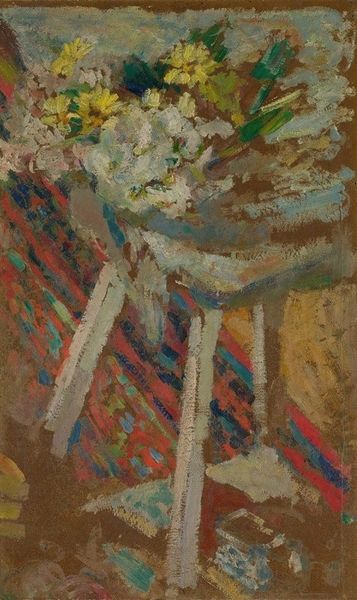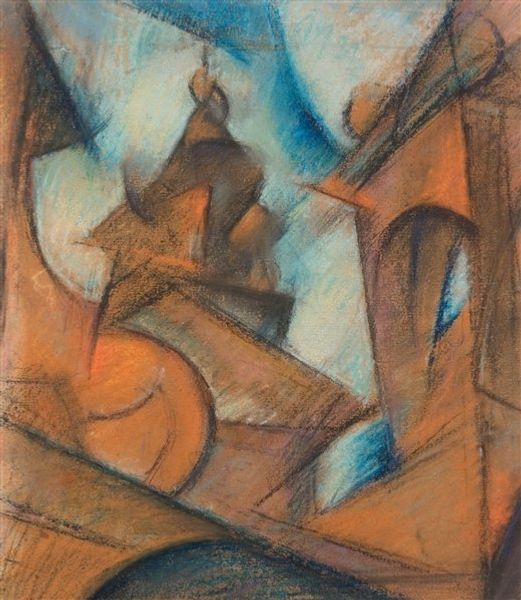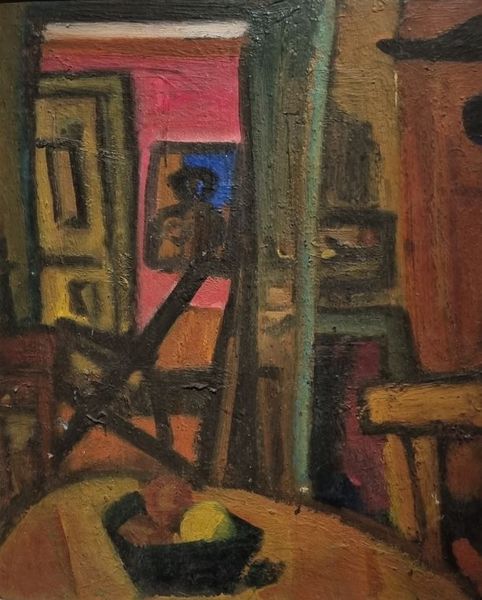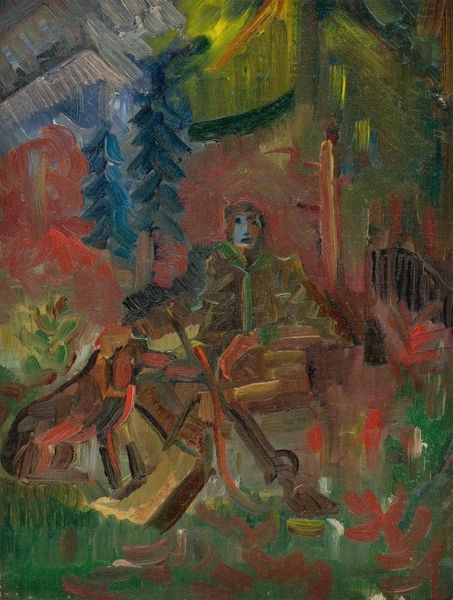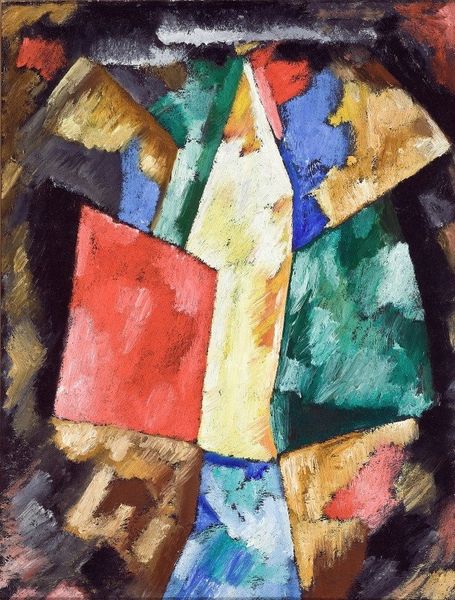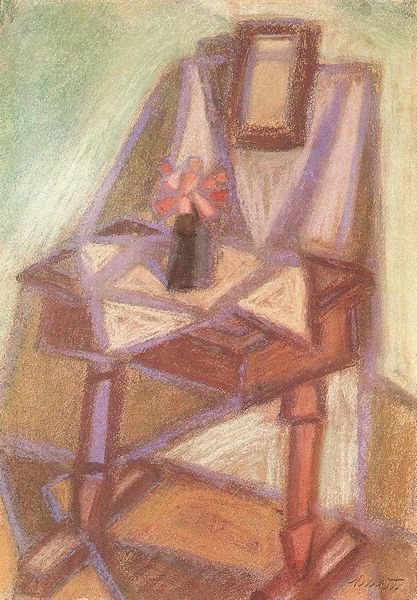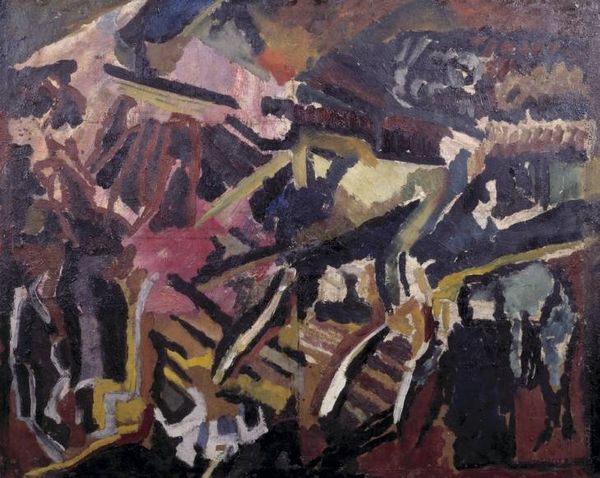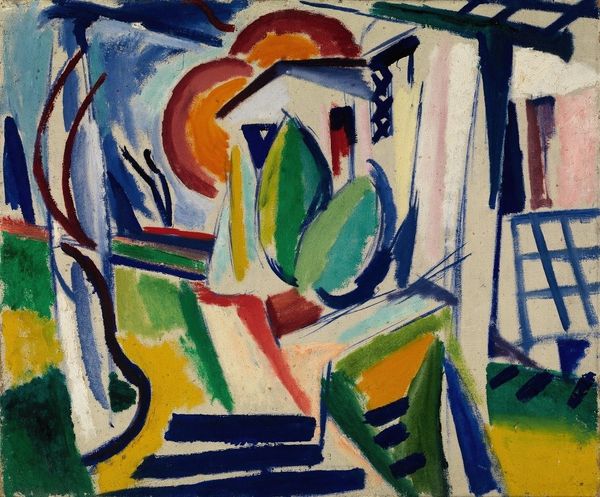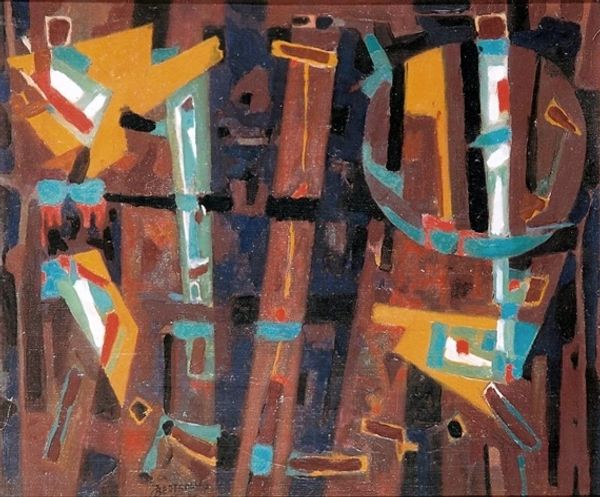
painting, oil-paint
#
cubism
#
abstract painting
#
painting
#
canvas painting
#
oil-paint
#
painted
#
form
#
oil painting
#
geometric-abstraction
#
line
#
modernism
Dimensions: 13.5 x 8 cm
Copyright: Public domain US
Editor: So, this is *Abstraction*, painted by David Burliuk in 1910, using oil on canvas. Looking at it, I’m struck by how fragmented everything is. It's almost like looking at a city through a shattered window. What do you see in this piece, beyond the fractured forms? Curator: For me, *Abstraction* isn't just about fractured forms, but about the breaking down of representational barriers in early 20th-century art. Consider the time. Burliuk, as part of the avant-garde, was actively challenging the established order. Think about the social and political upheavals happening then – the rise of industrialization, shifting class structures, new ideas about psychology. Could this dismantling of form be a reflection of dismantling social structures? How do you think early audiences might have reacted to such a non-traditional representation? Editor: I guess it might have been pretty shocking. It’s so different from traditional landscapes or portraits. So you’re saying that it's a commentary on the societal changes of the time? That by breaking down visual form, Burliuk was mirroring the breakdown of old power structures? Curator: Precisely! And beyond just mirroring, perhaps even advocating for that breakdown. Remember that avant-garde movements often saw themselves as agents of social change. They were pushing the boundaries of what art *could* be, and, by extension, questioning the boundaries of society itself. How do you see the use of colour contributing to this sense of disruption or change? Editor: The colors, like that mix of earthy browns and bright blues, seem kind of jarring when placed next to each other. Almost clashing, which definitely adds to the disruptive feeling. I see that makes this not just a formal experiment, but a political statement, too. Curator: Exactly. Art is never created in a vacuum. Understanding the socio-political context helps us to unpack the layers of meaning embedded in the work, making it resonate even today. What does that say to us, even in today's setting, about art's continuing role to question? Editor: I suppose it means art has always been, and still is, a powerful way to challenge norms and encourage dialogue. It certainly made me think about this painting in a completely different light! Curator: Absolutely. And that’s the power of art – to challenge, to provoke, and ultimately, to make us see the world anew.
Comments
No comments
Be the first to comment and join the conversation on the ultimate creative platform.
